Virgin and Child, probably Franconia, Germany,
Second half of the 15th century
Limewood, original gilt, silver and polychromy
Height: 95cm
The virgin that we present is in a very good state of preservation, having exceptionally preserved almost all of its original polychromy.
The applique sculpture in high relief presents the Virgin Mary standing holding the child Jesus in her arms. She is wearing a dress with a flared neckline and covered with a loose coat whose right end returns to the front in an apron revealing her waist underlined by a belt. The coat is held by his left arm bent at the elbow. The chubby child with finely curled hair looking straight ahead, completely naked is seated on the Virgin's right arm, her legs crossed.
Marie hands him an apple with her left hand, which the child holds back with his right hand. Marie's face with full cheeks underlined by a round and protruding chin is illuminated by her wide eyes looking straight ahead. Her long curly hair falls over her shoulders. His head slightly turned to the left is surrounded by a crown.
The drapes of the coat falling like an apron create a multitude of folds, some of which are rounded in a bowl on the front, while they fall in pipes on the right side. Arriving on the ground, the bottom of the coat breaks into broken folds, revealing the tip of his pointed shoe.
His left knee is slightly bent and marks the position of the forward left leg creating a barely perceptible sway in the lower part of the body.
The design of our sculpture in high relief and applique indicates that it originally adorned a large altarpiece devoted to the cult of the Virgin Mary and was no doubt surrounded by two holy women.
We thus find a very similar sculpture on an altarpiece of the Church of Our Lady in Ravensburg. We observe a lengthening of the body and a vertical position broken by an identical swaying of the hips and the folds of the mantle.
The pair of linden applique sculptures in the Metropolitan Museum of New York (Franconia, 15th-16th centuries, h. 109 cm) representing Saint Catherine and Saint John also have many points bringing them closer to our sculpture: the elongated bodies with the right knee advanced and slightly bent, the oblong faces with protruding chins, the pleated and belted dresses with the high waist.
Finally, the altarpiece of St. Marienkirche in Berlin offers stylistic characteristics that could suggest the same artist's studio. It presents a Virgin and Child surrounded by Saint Catherine and Saint Barbara.
This altarpiece, originally in the church of Massen in Westphalia, is dated 1460-1490. We find a naked child Jesus with crossed legs, the three sculptures having the same bend of the forward left knee. The elongated figures with straight and not leaning faces, the arrangement of the drapes of the coat, the similar polychromy (silver dresses a la mecca, the golden coats and the red lapels are all elements in favor of the rapprochement)
Between the itinerant artists and the exchanges between different regions, it seems difficult to establish an exact production site of our sculpture, however taking into account our research and similarities with statues of Metropolitan Museum of New York we can suggest the region of Franconia or central Germany





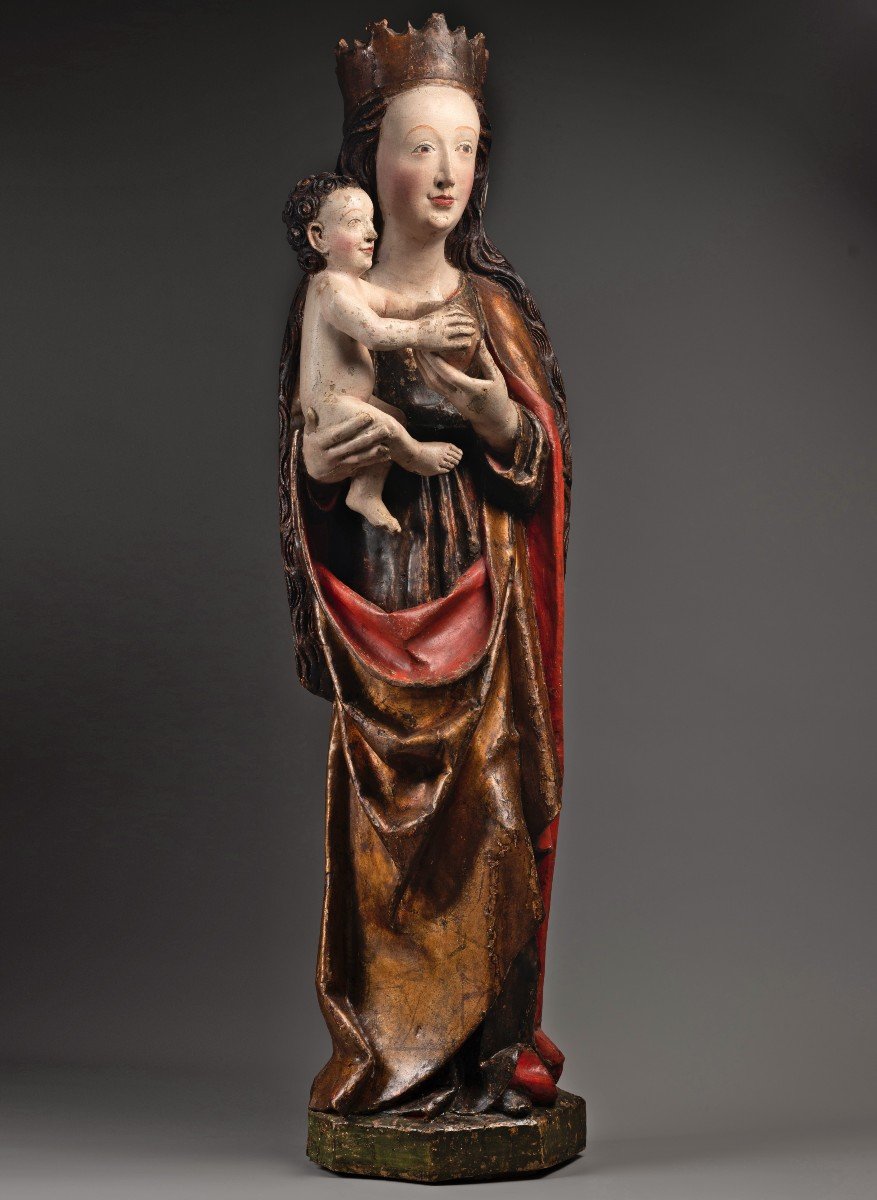




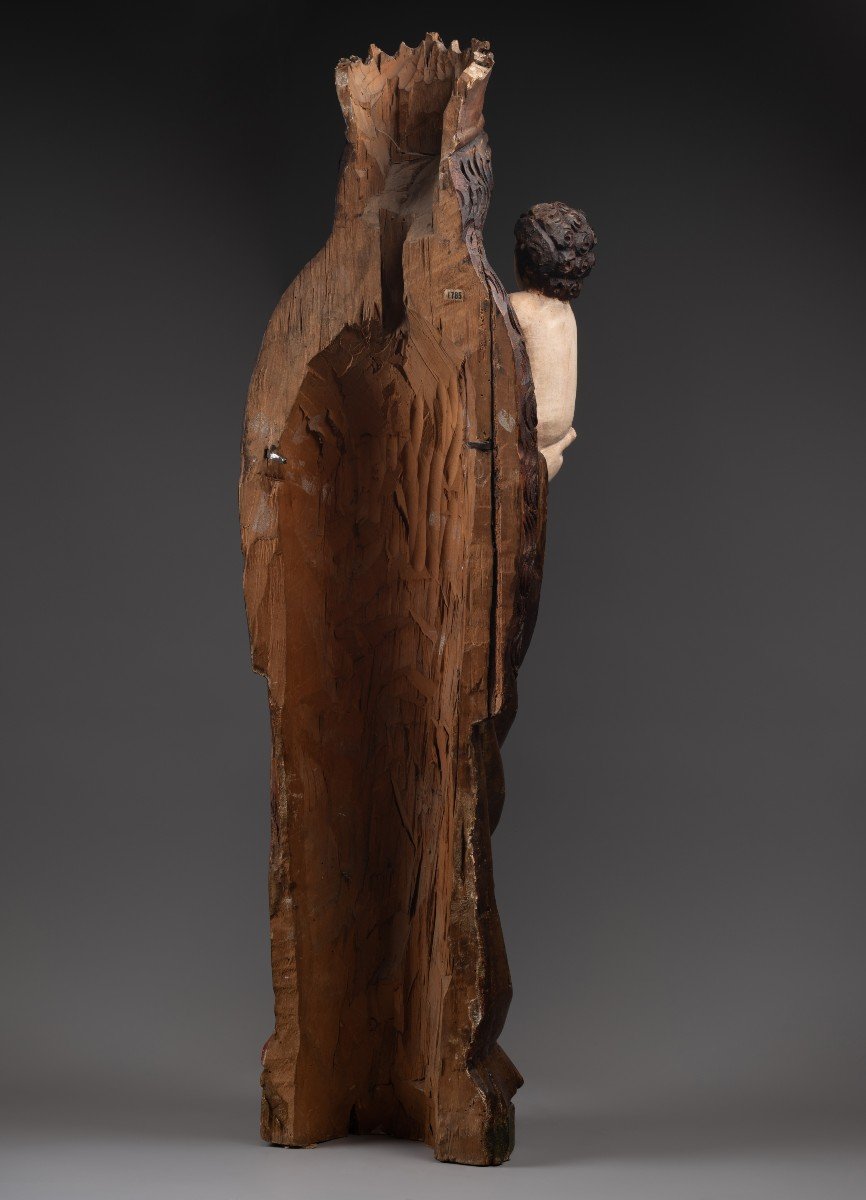

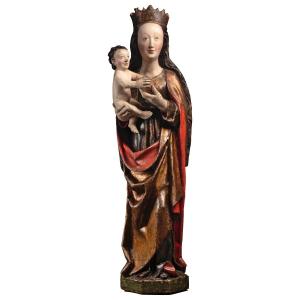











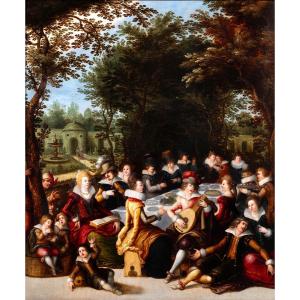

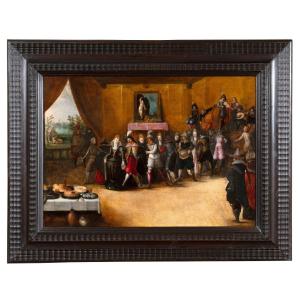


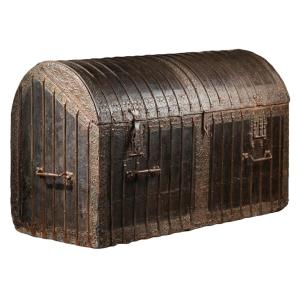
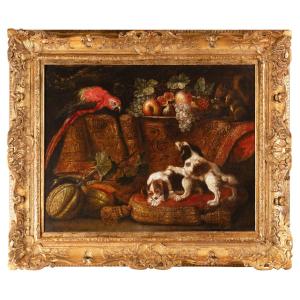



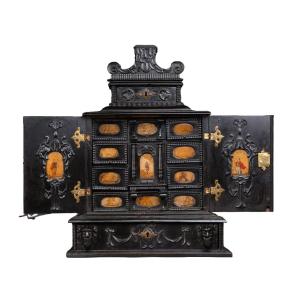


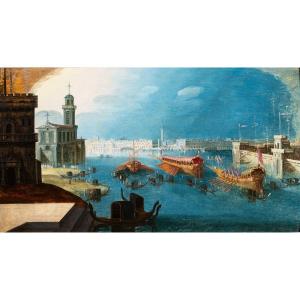
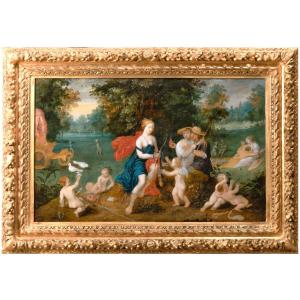
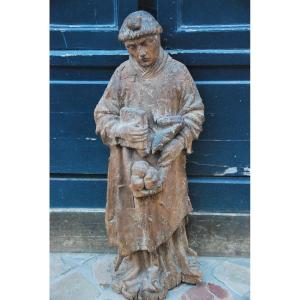
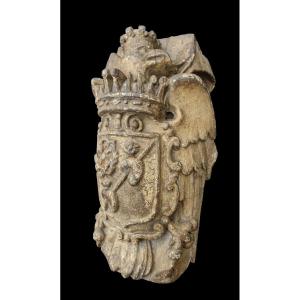

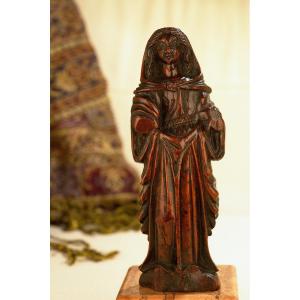
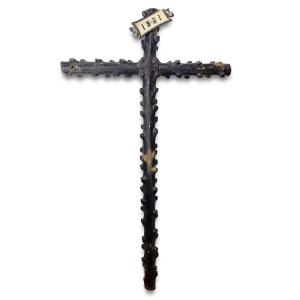



 Le Magazine de PROANTIC
Le Magazine de PROANTIC TRÉSORS Magazine
TRÉSORS Magazine Rivista Artiquariato
Rivista Artiquariato